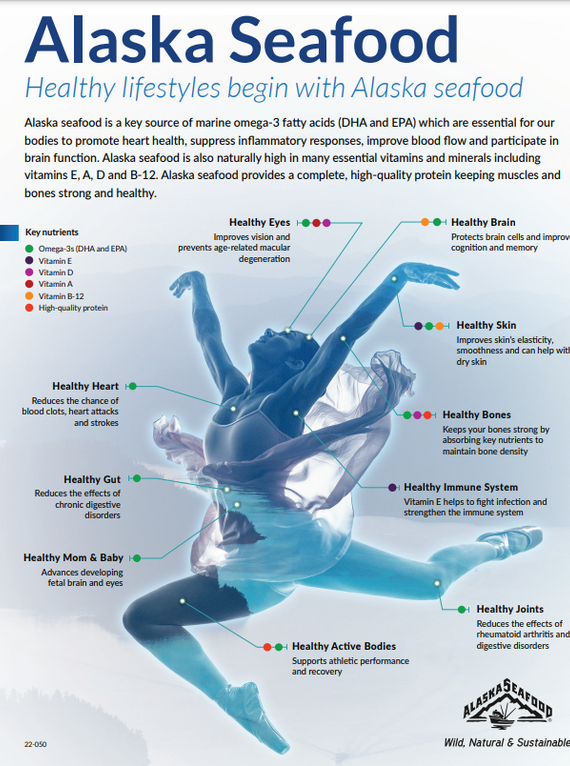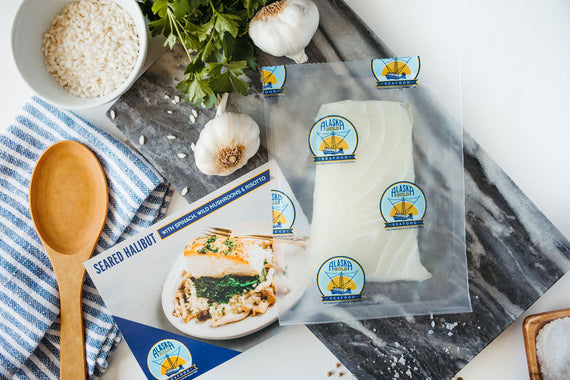
Should I eat the skin on Alaska Gold salmon fillets? The quick answer is YES! There is a lot of nutrition in the skin. And some customers are fanatical about a crispy salmon skin.
Salmon skin is made up of collagen and is loaded with omega-3 fatty acids. These omega-3s are essential for heart health and brain health. These omega-3 fatty acids are particularly present in the fatty layer underneath the salmon skin, which we call the “fat line.”
Even if you don’t eat the skin, we also recommend that you leave the skin intact on our salmon portions. Leaving the skin intact will hold in moisture when cooking, making the fillet more difficult to overcook. Keeping the skin on is especially important when cooking salmon on the grill. The skin also locks in the nutritional value of the salmon fillet, too, better preserving the natural fats and nutrients in the salmon. And a lot of these nutrients you will definitely want, like vitamin D, vitamin B12 and potassium, in addition to the omega-3 fatty acids.
Since salmon live in cold waters, they need some insulation to “stay warm,” at least as much as a cold-blooded fish needs to stay warm. So the skin has high levels of the healthy fats that we are looking for when we seek out fish.
Another key component of salmon skin is the collagen. The collagen proteins in salmon support skin and joint health. There are a number of collagen supplements but you can get it directly from salmon skin. Collagen is a body of proteins whose purpose in our bodies is to give structure to skin, bone and muscle, making them both more elastic and able to withstand stretching. Collagen supplements are popular in the beauty and skin healthcare world for keeping skin looking young and supple. When our collagen production slows, taking collagen can help the body naturally product collagen, keeping our skin firm and taut, and possibly preventing wrinkling. It can also support skin hydration. Collagen provides structure and support for fingernails and hair as well. Hair is made up of the protein keratin. Amino acids are what make up keratin and for the body to build keratin, it needs several types of amino acids present in collagen. There are other potential benefits of eating salmon skin, too, such as the protection from UV radiation.
Salmon skin can have a strong taste—at least most people will find it stronger or more metallic tasting than the “meat” part of the fillet. But you can turn that skin into gold as well and customers appreciate the crispy, salty bite of a well-cooked salmon skin. We recommend a few ways to make salmon skin tastier and get the crispy skin that salmon lovers enjoy:
If you’re pan-frying, avocado oil is the best oil to use and remember to pat the salmon dry and let your skillet get piping hot. Ideally, use a cast iron skillet for pan-frying.
If you’re baking the salmon, turn your oven to broil for the last 2 minutes of baking and flip the fillet skin-side up and broil.
You can even make salmon bacon! Remove the skin by placing a raw salmon portion on a cutting board skin-side down. Press down on the portion while sliding a very sharp knife between the skin and the flesh. Slide the knife to remove the skin. After removing the skin, cut it into one-inch strips. Heat some avocado oil in a skillet over medium-high heat. Once the oil is hot, place the salmon skin strips in the skillet. Repeatedly flip the strips over to keep from burning. They’ll be ready when they’re crispy. Place them on a plate with paper towels and season with salt and pepper. This salmon bacon can be served as a bacon substitute for breakfast or alongside a salad for dinner.



